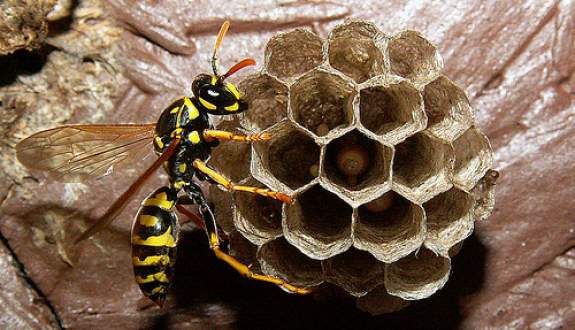Yellow Jackets may seem harmless from a distance, but once they invade your home, they can become quite the troublemakers. In this article, we’ll explore the various ways yellow jackets can wreak havoc on both humans and Michigan properties. We’ll also delve into DIY removal methods for those brave enough to tackle the task themselves and discuss when it’s best to call in the professionals for expert assistance. So, grab your bee suit and get ready to confront these buzzing bandits head-on!
What Are Yellow Jackets?
Yellow jackets are fascinating creatures that belong to the wasp family, scientifically known as Vespidae. These small insects are commonly recognized for their vibrant yellow and black markings, making them easily distinguishable from other flying insects. They are often mistaken for bees due to their similar appearance, but there are notable differences between the two.
Yellow jackets are social insects, living in large colonies consisting of thousands of individuals. They build their nests in various locations, such as underground burrows, hollow trees, or even within structures like attics or wall voids. These nests are made of a papery material produced by chewing and mixing wood fibers with saliva.
As predators, yellow jackets play a vital role in the ecosystem by feeding on other insects, including flies, caterpillars, and even spiders. They are particularly active during the warmer months when they forage for food to sustain their colony.
While yellow jackets are beneficial in controlling pest populations, they can pose significant threats to humans and property. These stinging insects are known for their aggressive nature when their nest is disturbed or they perceive a threat. Each yellow jacket is equipped with a venomous stinger, which can cause painful stings and, in some cases, severe allergic reactions.
It’s important to note that yellow jackets are attracted to sugary substances, especially during late summer and early fall when their diet shifts to carbohydrates. This is when they become more noticeable and can be a nuisance at outdoor gatherings or near garbage cans.
Identifying yellow jackets is crucial for distinguishing them from other harmless insects. Their slim body, bright yellow and black coloration, and characteristic narrow waist help in their identification. Additionally, their flight pattern is distinct, with fast, darting movements.
Understanding what yellow jackets are and their behavior is essential for effective pest management. By recognizing their characteristics, habitats, and potential dangers, individuals can take appropriate measures to protect themselves, their loved ones, and their property from these buzzing pests.
The Dangers of Yellow Jackets
One of the primary dangers of yellow jackets is their painful sting. When provoked or threatened, yellow jackets can become aggressive and sting in defense. Unlike honeybees, they can sting multiple times, increasing the potential for multiple stings in a single encounter. These stings can cause intense pain, swelling, and allergic reactions in sensitive individuals. For those with severe allergies, yellow jacket stings can even be life-threatening, leading to anaphylaxis.
Yellow jackets are also known for their ability to cause property damage. When seeking shelter or constructing their nests, they often choose voids within buildings, such as wall cavities or attics. As they build their nests, they may chew through drywall, insulation, and other materials, causing structural damage. Additionally, their nests can attract other pests, such as carpet beetles or rodents, which can further harm your property.
In outdoor settings, yellow jackets can be a nuisance during picnics, barbecues, or outdoor events. Their attraction to sugary foods and beverages can disrupt gatherings and cause distress to guests. Furthermore, their presence near garbage cans or outdoor dining areas can contaminate food and create unsanitary conditions.
For individuals with allergies, the dangers of yellow jackets are heightened. Even a single sting can trigger severe allergic reactions, including difficulty breathing, swelling of the throat, and a drop in blood pressure. Prompt medical attention is vital in such cases.
To minimize the risks associated with yellow jackets, it’s crucial to take preventative measures. Keep food and beverages covered during outdoor activities, and dispose of trash properly in sealed containers. Seal potential entry points in buildings to prevent nesting. If you encounter a yellow jacket nest on your property, it is best to seek professional pest control services to ensure safe removal.
By understanding the dangers posed by yellow jackets and taking appropriate precautions, you can protect yourself, your loved ones, and your property from potential harm. Stay vigilant, especially during the warmer months when yellow jacket activity is at its peak, and take proactive steps to mitigate the risks associated with these stinging insects.
How to Find Yellow Jackets
If you suspect yellow jackets have taken up residence near your home, it’s important to locate their nests to mitigate potential risks. Here are some helpful tips on where to look for yellow jacket nests and how to identify their presence.
- Outdoor Spaces: Begin your search in outdoor areas where yellow jackets are commonly found. Check around eaves, soffits, and gutters, as these locations provide suitable shelter for nest construction. Look for small entry holes or openings where yellow jackets might be going in and out.
- Ground Nests: Yellow jackets often build their nests in underground burrows. Keep an eye out for signs of yellow jacket activity near the ground, such as multiple wasps flying low to the surface or frequent visits to a specific area. Look for entrances to their nests, which are typically small holes in the ground with visible wasp traffic.
- Wall Voids: Yellow jackets may find their way into wall voids or other hidden cavities within the structure of your home. Inspect areas where there might be access points, such as gaps or cracks in the walls, siding, or vents. Listen for buzzing sounds or observe wasps entering or exiting these areas.
- Siding and Fascia Boards: Check along the edges of your home’s siding and fascia boards. Yellow jackets may construct nests in gaps or crevices, especially if the material is deteriorating or damaged. Look for any signs of wasp activity, including yellow jackets entering or exiting small openings.
- Sheds and Outbuildings: Yellow jackets are known to establish nests in sheds, garages, or other outbuildings. Inspect these structures thoroughly, paying close attention to corners, rafters, and any potential nesting sites such as unused equipment or stored items.
Remember to exercise caution during your search and approach suspected nests with care. Disturbing yellow jackets can provoke defensive behavior and result in stings. If you are uncertain or uncomfortable dealing with yellow jackets on your own, it is advisable to seek professional pest control assistance for safe and effective removal.
How to Get Rid of Yellow Jackets
If you discover a yellow jacket nest near your home, you may be wondering how to eliminate these stinging insects on your own. While it’s important to exercise extreme caution, here are some steps you can take to get rid of yellow jackets without professional assistance.
- Protective Gear: Wear protective clothing to minimize the risk of being stung. Cover yourself from head to toe with long sleeves, pants, gloves, and closed-toe shoes. Additionally, consider wearing a hat with a net or veil to protect your face.
- DIY Traps: Several DIY traps can be effective in capturing and eliminating yellow jackets. One simple method is to fill a jar with a sweet liquid, such as sugar water or fruit juice, and place it near the nest. The yellow jackets will be attracted to the bait and drown in the liquid.
- Dusting or Spraying Insecticides: Insecticidal dusts or sprays specifically designed for wasp and yellow jacket control can be applied to the nest entrance during the evening when the yellow jackets are less active. Follow the product instructions carefully and take precautions to avoid contact with the insecticide.
- Nighttime Treatment: Yellow jackets are less active during nighttime, making it an ideal time to treat the nest. Using a spray specifically formulated for wasp and yellow jacket control, thoroughly saturate the nest entrance and surrounding areas. Be sure to keep a safe distance and quickly retreat after treatment.
- Seal Entry Points: Once the yellow jackets have been eliminated, it’s essential to seal any entry points to prevent future infestations. Repair or seal cracks, gaps, and openings in your home’s exterior to discourage yellow jackets from nesting.
It’s important to note that removing yellow jackets on your own can be risky, especially if you have allergies or the nest is in a challenging location. If you are unsure or uncomfortable handling yellow jacket removal, it is highly recommended to contact a professional pest control service. They have the expertise and protective gear necessary to safely and effectively eliminate the infestation.
Always prioritize your safety and consult local regulations or guidelines regarding the use of insecticides and the control of stinging insects.
When Should You Call a Professional
While it may be tempting to handle yellow jacket infestations on your own, there are situations where it’s best to call a professional pest control service provider. Removing yellow jackets can be dangerous, and without the proper knowledge and equipment, you may put yourself and others at risk. Here are some scenarios when it’s advisable to seek professional help:
- Large or multiple nests: If you notice a large or multiple yellow jacket nests on your property, it’s a clear indication that the infestation is significant. Removing these nests without professional assistance can be challenging and hazardous. Pest control experts have the experience and specialized equipment to handle large-scale infestations safely and efficiently.
- Hard-to-reach nests: Yellow jackets are resourceful when it comes to selecting nesting locations. They may build their nests in hard-to-reach areas, such as wall voids, attic spaces, or underground. Attempting to access and remove these nests without professional expertise can lead to property damage or accidental stings. Pest control professionals have the expertise and tools necessary to safely reach and eliminate hidden nests.
- Allergic reactions: If you or anyone in your household has a known allergy to yellow jacket stings, it’s crucial to avoid any direct contact with these insects. Even a single sting can trigger severe allergic reactions that require immediate medical attention. Pest control professionals are trained to handle stinging insects safely, minimizing the risk of allergic reactions and ensuring your safety.
- Recurring infestations: If you’ve tried to remove yellow jackets on your own but continue to experience recurring infestations, it’s a sign that there may be an underlying issue. Pest control professionals can assess the situation, identify the root cause, and implement long-term solutions to prevent future infestations.
- Lack of knowledge or experience: Yellow jacket removal requires a good understanding of their behavior, nesting habits, and appropriate control methods. Without proper knowledge and experience, DIY attempts may be ineffective and lead to frustration. Pest control experts have the expertise to accurately assess the situation, employ the most effective strategies, and ensure complete eradication of yellow jackets.
When it comes to dealing with yellow jackets, it’s important to prioritize safety and effectiveness. Calling a professional pest control service provider offers peace of mind, expert knowledge, and tailored solutions to address your specific yellow jacket infestation. Don’t take unnecessary risks—rely on the expertise of professionals to handle yellow jackets safely and efficiently.

